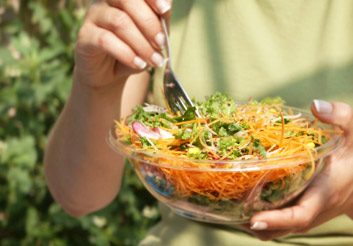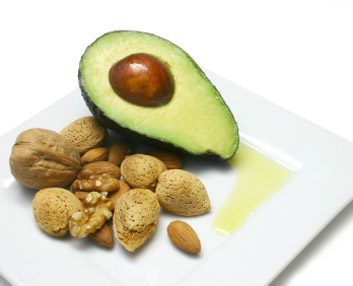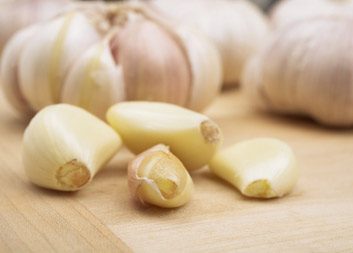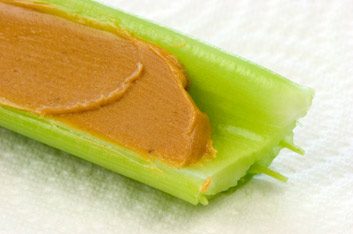
How to eat well
It’s one thing to have a philosophy about healthy eating. But putting it into practice and making it an everyday reality takes more than discipline-it takes clever thinking and specific actions. With that in mind, here is a collection ofhints and tips to help you on your road to eating to beat diabetes.

Eat more vegetables
Vegetables don’t raise blood sugar very much and add few calories. In fact, they are the most nutrient-dense, low-calorie foods you can eat. And if you load up on them, you won’t have as much room for less healthy, calorie-dense foods.
The exception, of course, would be the starchier vegetables like potatoes, corn, peas and winter squash, but they should not be counted out. In fact, it is probably wiser to consume your starches in the form of starchy vegetables more often than bread or pasta. Starchy vegetables provide more vitamins, minerals and fibre than the more processed and refined breads, pastas and some grains.
As for non-starchy vegetables, eat them with gusto! Aim for at least three to five servings a day.

Pour on some fat
You need fat in your diet for healthy cells. And fat is important in managing diabetes because it keeps you feeling satisfied. Eat more than you need, though, and those fat calories will end up stored on your hips-so be choosy about the amount and type of fat you choose. Some suggestions:
• Add a tablespoon of nuts, particularly almonds or walnuts, to a salad, soup or main course.
• Instead of using low-fat salad dressings, drizzle on a tablespoon of olive oil paired with flavourful vinegars.
• Add a slice or two of avocado to a sandwich or omelette.

Eat for healing
Many natural foods are filled with micronutrients-organic chemicals with extraordinary healing powers and important benefits for your body. Since having diabetes may increase the risk for high cholesterol, heart disease, kidney problems and high blood pressure, you’ll want to be sure to eat foods that play a role in the prevention of these problems. Some examples:
• Garlic can lower cholesterol levels and blood pressure.
• Red wine may play a role in preventing heart disease-but drinking alcohol regularly may not be the best idea for a person with diabetes. Instead, for similar benefits, eat a small portion of red grapes or drink a small glass of grape juice.
• Eating a bowl of oatmeal (a rich source of soluble fibre) has been shown to lower cholesterol.
• The phytochemical called lutein found in spinach and other dark leafy greens may help fight macular degeneration, a major cause of vision problems.

Drink water constantly
Water regulates body temperature, transports nutrients and oxygen, carries away waste, helps detoxify the kidneys and liver, dissolves vitamins and minerals, and cushions the body from injury. Even mild dehydration can lead to health problems, such as fatigue and constipation. There is also some evidence that drinking adequate water may help prevent some diseases such as kidney stones and may be associated with a lower incidence of colon cancer.
Water is best, but milk, juices, watery fruits and veggies, soups and decaffeinated tea can also count. But be aware that these other foods also add calories. Caffeinated beverages and alcohol do not count. They act as diuretics and increase fluid loss.
Don’t leave your water intake to chance. Develop a regular program by keeping water bottles and pitchers near you as a reminder. And don’t wait until you’re thirsty. You may already be dehydrated. When in doubt, fill your glass again. You’ll need to drink extra amounts of water in dehydrating conditions such as hot, humid or cold weather, or high altitudes.

Eat more frequently
In other words, migrate away from three big meals a day and shift to pleasant but smaller meals, plus lots of healthy snacks. Studies indicate that staggering your food throughout the day not only helps to stabilize blood sugar but also may lower cholesterol levels. Of course, your body is unique, and the nature of your diabetes will affect the frequency with which you should eat. Work with a dietitian to come up with a good plan for dividing your meals up throughout the day.

Dine with people you like
That’s because you are going to do a lot of food sharing! Particularly at restaurants, get in the habit of splitting entrées, sharing appetizers, ordering a sampling menu. The reason: Portions are often out of control at restaurants. By making the food communal, you can enjoy lots of unique flavours without overdoing it. Not only is this good for your weight, but when you are consistent with food portions day in and day out, your blood sugar has a greater chance of staying stable.

A two-pronged approach
There is not just “one” diabetes diet. Every food fits. And there are many meal-planning approaches to manage your diabetes. You don’t have to eat all sugar-free foods or restrict fat to a bare minimum. You can eat out, be a vegetarian, enjoy the holiday foods. But the bottom line is keeping the blood sugar stable by eating a healthy mix of nutrients.
You’ll increase your chances of success by taking a two-pronged approach: Pay attention to what you eat and how much you eat. Build your diet on the foundation of good food in modest amounts. Eat about the same amount of food each day at about the same time each day, and don’t skip meals. Within these few guidelines, you can build a delicious diet that will provide lifelong health.
